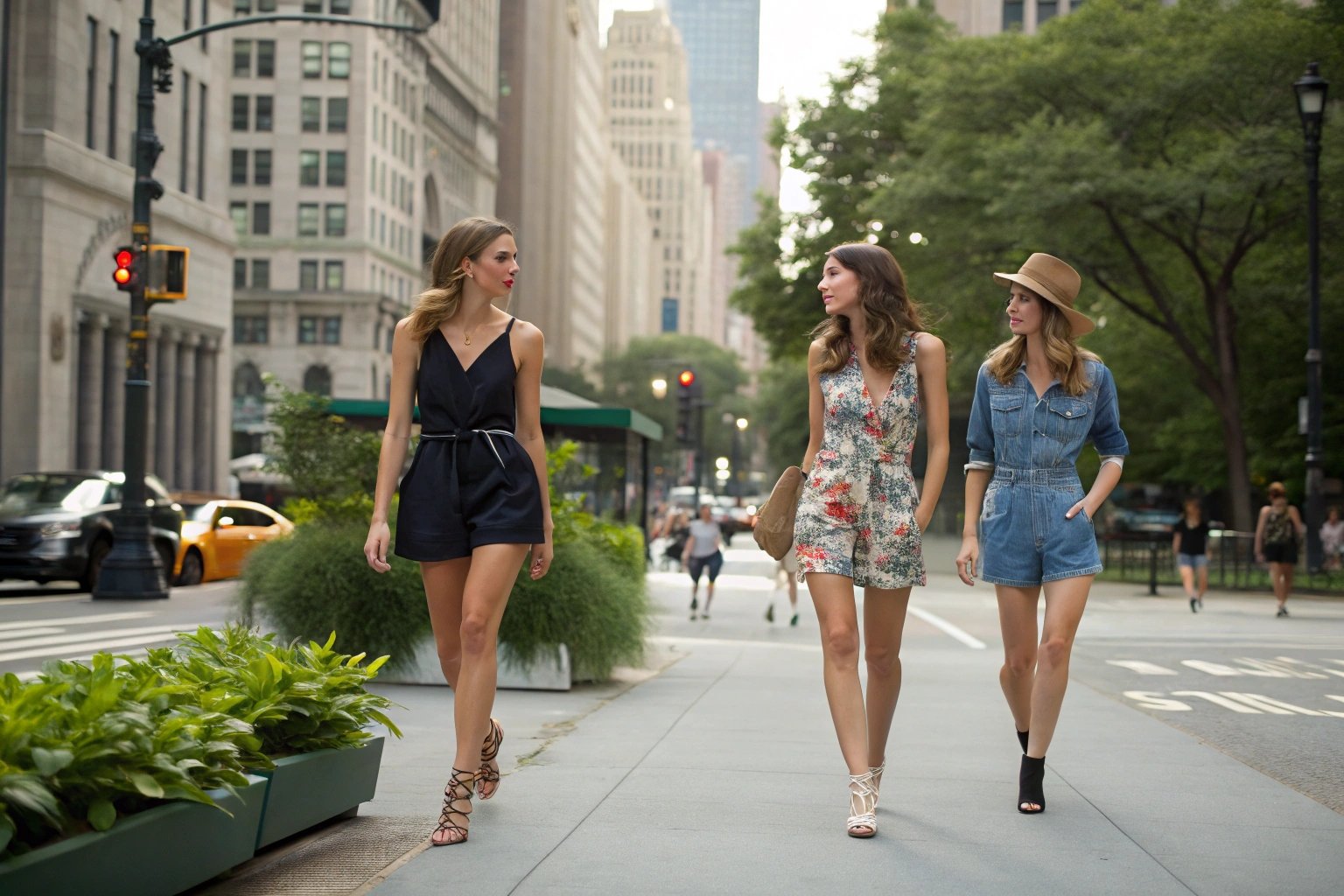Rompers—once known mostly as children’s playwear—have grown into a fashion staple that combines style, practicality, and all-day comfort. In today’s fast-moving world, where versatility matters more than ever, rompers strike the right balance between laid-back cool and fashion-forward elegance.

In this article, I’ll look at why rompers continue to dominate, how they’ve evolved, and why 2025 might just be their strongest year yet in both casual and elevated wardrobes.
Why Do Rompers Keep Coming Back?
The key reason rompers never truly leave the fashion scene is because they simplify life. They offer a one-and-done solution for getting dressed, without sacrificing personal style. You don’t need to coordinate a top and bottom or worry about whether a look is polished enough—rompers do all the heavy lifting.
Comfort plays a huge role. Rompers are often made from breathable fabrics like cotton, linen, or rayon, making them perfect for hot days or relaxed weekends. At the same time, they’ve evolved to include sophisticated silhouettes and elevated materials that suit evenings, events, or professional wear. Add to that their adaptability across age groups, body types, and gender expressions, and you get a piece that meets nearly every modern wardrobe need.
How Have Rompers Changed Over the Years?
Originally, rompers were strictly functional—easy for children to move around in. But fashion has a way of reinventing the practical into something chic. Over the past two decades, rompers have expanded from beachwear and loungewear into high fashion. They now come in versions made from satin, silk, structured crepe, and even leather.
Tailoring has also improved. We’re seeing rompers with darted waists, wide-leg silhouettes, puff sleeves, and even matching belts that flatter the body and give shape. This evolution has made rompers suitable for everything from weddings to work settings, depending on how they’re styled. There’s also been a rise in gender-inclusive romper designs, expanding the appeal even further and supporting the movement toward more fluid fashion.
Why Are Rompers Still Popular in 2025?
The short answer? They meet the needs of the moment. In 2025, comfort still drives many fashion choices—but consumers also want smart, transitional pieces that can do more than one job. Rompers check all the boxes: stylish enough for a dinner out, easy enough for lounging, and cool enough to stay on trend.
Minimalist fashion continues to influence buying habits, and rompers are tailor-made for that movement. You can throw one on and be done with it, yet still look put together. And as sustainability becomes more important, customers appreciate versatile items that reduce overbuying. A single romper can often replace multiple separate pieces, especially when styled creatively with layers or accessories.
What Makes a Romper So Versatile?
The power of a romper lies in how easily it transforms across contexts. A cotton romper can be a go-to for weekend errands or park days. Swap it out for one in satin with a belted waist and it suddenly works for cocktails or an art opening. And thanks to the range of cuts—off-shoulder, collared, sleeveless, long-sleeve—you can find a romper for every mood and every season.
Footwear and accessories also do a lot of work here. Sandals and a straw tote make a romper beach-ready. Heels and statement earrings turn the same outfit into something date-night worthy. In colder months, throw on tights, boots, and a trench coat. The right romper can work across climates and dress codes if designed thoughtfully.
Are Rompers Practical for All Body Types?
Yes—and that’s one reason they’ve stuck around. Designers now offer rompers in a wide range of fits, from loose and flowy to structured and cinched. There are styles with elastic waistbands, drawstrings, or wrap details that let the garment mold to different shapes. Short and tall sizing is also becoming more common.
When made with stretch or adjustable elements, rompers adapt well. They offer comfort while still creating a flattering line, especially when tailored in a way that highlights the waist or elongates the leg. Because the garment is all one piece, it reduces visual clutter, which can help create a cleaner silhouette on many body types.
Will Rompers Stay in Style Beyond 2025?
Looking at the broader direction of fashion, there’s no reason to believe rompers will fade. In fact, the opposite is likely true. Their continued reinvention—across streetwear, loungewear, and luxury fashion—proves that they can adjust to changing tastes. As designers explore even more sustainable, adaptable, and inclusive garments, the romper will continue to be a favored format.
In retail and e-commerce, the romper is also a top-performing item because of its visual impact. It photographs well, has instant styling appeal, and draws attention online. As digital shopping and social media influence remain strong, rompers benefit from their bold, all-in-one silhouette that looks great from every angle.
Conclusion
Rompers are not just a passing trend—they’re a solution to the modern fashion equation. Easy to wear, flattering on many body types, and endlessly adaptable, they meet the needs of 2025’s consumers who demand both function and flair. Whether in a minimalist wardrobe or a statement-maker’s closet, rompers are here to stay. And with thoughtful updates in design and fit, they’ll likely remain a staple for many seasons to come.

